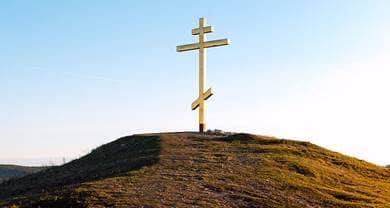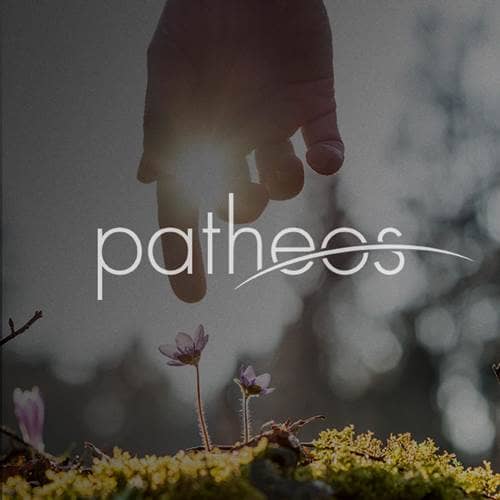- Trending:
- Pope Leo Xiv
- |
- Israel
- |
- Trump
- |
- Social Justice
- |
- Peace
- |
- Love

RELIGION LIBRARY
Eastern Orthodoxy
Schisms and Sects
The organization and concerns of the Church in Rome were largely determined by the disintegration of the western half of the Roman Empire in the 5th century, and the so-called Dark Age that subsequently engulfed Europe. The eastern Roman Empire, based in Constantinople, survived for another thousand years. The relative stability provided by the central governing authority, the Emperor, created radically different conditions for the development of Eastern Christianity, and eventually the Eastern Orthodox and Western Roman Catholic Churches separated in what has been called the "Great Schism."
Prior to the Great Schism, however, Christianity experienced the impact of two other schisms, both of which affected churches in the Eastern Roman Empire. Doctrinal disagreements, coupled with the spread of Islam in the 7th century, conspired to split the ancient patriarchates of Antioch, Alexandria, and Jerusalem from Constantinople.
The Eastern Orthodox Church also refers to itself as The Church of the Seven Councils. In Eastern Orthodox belief, the fundamentals of the Christian faith are defined in two sources: the Christian scriptures and the decrees of the ecumenical councils. In the eyes of Eastern Orthodoxy, there have only been seven such councils, all of them held in the eastern part of the Roman Empire before the close of the 8th century. Because these councils drew representative bishops from all Christian churches, east and west, they are called Ecumenical Councils, and are therefore recognized as authoritative by both Roman Catholics and Orthodox.
The first of these ecumenical councils was the Council of Nicaea, summoned by Emperor Constantine in 325. This council agreed on a creed stating the fundamentals of Christian faith, called the Nicene Creed. Among other things, this Creed defined the doctrine of the Trinity. It states that Christians believe in one God who is at the same time three: Father, Son, and Holy Spirit. The Son, Jesus, is equal to the Father, as the Creed says, "true God from true God . . . one in essence [homoousios] with the Father." The second council, convened in Constantinople in 381, makes the same affirmation about the Holy Spirit, who is "together worshiped and together glorified" with the Father and the Son. Together these two councils affirmed the full divinity of all members of the Trinity.
The next four councils convened to debate the doctrine of the Incarnation, or the nature of Jesus Christ. Through their decrees, these councils defined Christ as simultaneously God and human, single and undivided. The first of these, the Council of Ephesus, convened in 431. The participating bishops decreed that Mary, the mother of Jesus, should be accorded the status of Theotokos, or Mother of God. The second, meeting again in Constantinople, convened in 553, and affirmed that in the crucifixion, Christ suffered in the flesh. The third, the Council of Chalcedon, convened in 451. The decrees of the Council of Chalcedon made a significant contribution to the Christian doctrine of the Incarnation, stating that Christ is both completely divine and entirely human. He was not half God and half human, but totally God and totally human, existing "in two natures," one divine and the other human, and both complete. The fourth, meeting for a third time in Constantinople in 680, added that Christ has two energies and two wills, human and divine.
The decisions of these councils had a lasting impact on eastern Christianity. The members of the East Syrian, or Nestorian church, rejected the decisions of the Council of Ephesus and the second Council of Constantinople. These two councils had decreed that God had been born with a human body from a human body, and when he was crucified, had physically suffered. In the eyes of the Nestorian church, these teachings confused the divinity and humanity of Christ, and undermined the belief in a transcendent God. Their rejection of these two councils was an important element in the separation of the Nestorians from the rest of the church in what became the first schism suffered in Christianity. The rift was never healed, due to the lack of contact between the Nestorians, who lived in the Persian Empire, and the rest of the church, still in the Roman Empire. Today the Nestorian churches include the East Syrian Church, the Chaldean Church, and the Church of the East.
A number of other eastern Churches rejected the decision of the Council of Chalcedon, resulting in the second schism of the Christian churches. The Council of Chalcedon had determined that Christ is both completely divine and entirely human, "in two natures." In the view of those who rejected this decision, the affirmation of Christ's divinity and humanity existing "in two natures" divided the one Christ into two. They prefer to speak of "one incarnate nature of God the Word." These churches are alternatively called, perhaps unfairly, the Monophysite Churches, the non-Chalcedonian Churches, or the Oriental Orthodox Churches, and include the Syrian Church of Antioch, the Syrian Church of India, the Coptic Church of Egypt, the Armenian Church, and the Ethiopian Church.
The Nestorians and the non-Chalcedonians are also called the "Separated Churches," because although they separated from the rest of the church over these doctrinal disagreements, history and politics hardened the separation. The Roman Emperor Justinian fiercely persecuted the churches in Syria and Egypt with serious consequences. When the Arabs conquered Syria, Palestine, and Egypt in the middle of the 7th century, the churches welcomed them based on Muslim guarantees that their religion would be tolerated. The Arab conquest of these three ancient patriarchates—Antioch, Jerusalem, and Alexandria—left the patriarchate in Constantinople alone as the only major center of Christianity in the east.
The seventh and last ecumenical council, held at Nicaea in 787, affirmed the veneration of icons as valuable and consistent with the doctrine of the Incarnation. This did not provoke any schisms, and played a significant role in affirming several distinguishing features of Eastern Orthodox belief and practice.
Study Questions:
1. What events led to the “Great Schism” separation?
2. Why is the Eastern Orthodox Church often referred to as the Church of Seven Councils? Describe each of the councils.
3. What councils had lasting impacts on eastern Christianity? Why?
4. Describe the divide between the Nestorian church and the Council of Constantinople. What are the contemporary effects?










